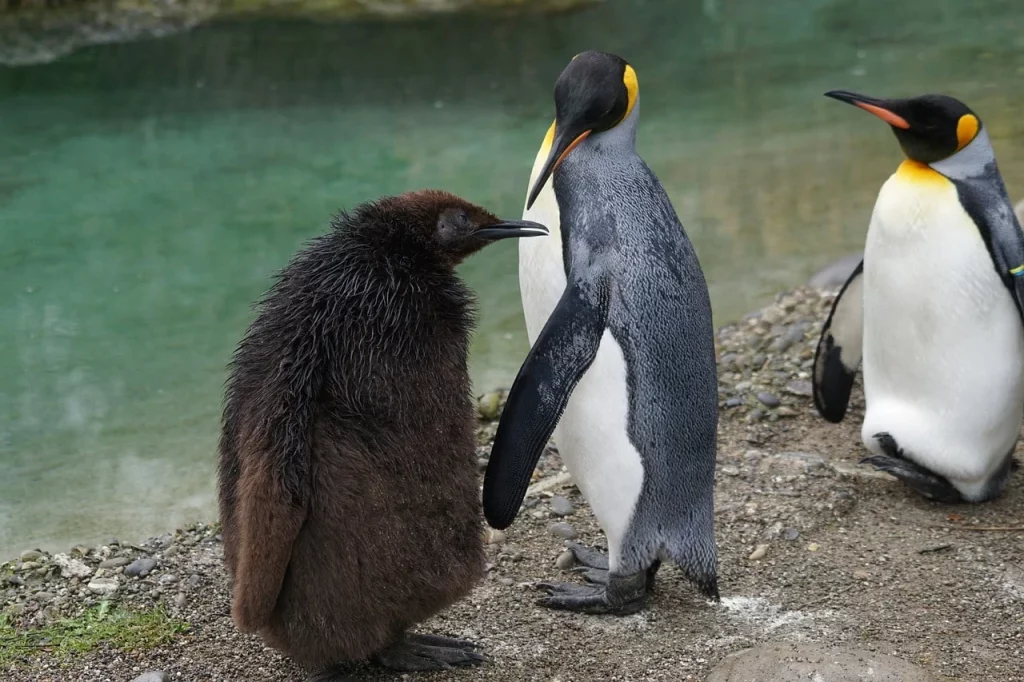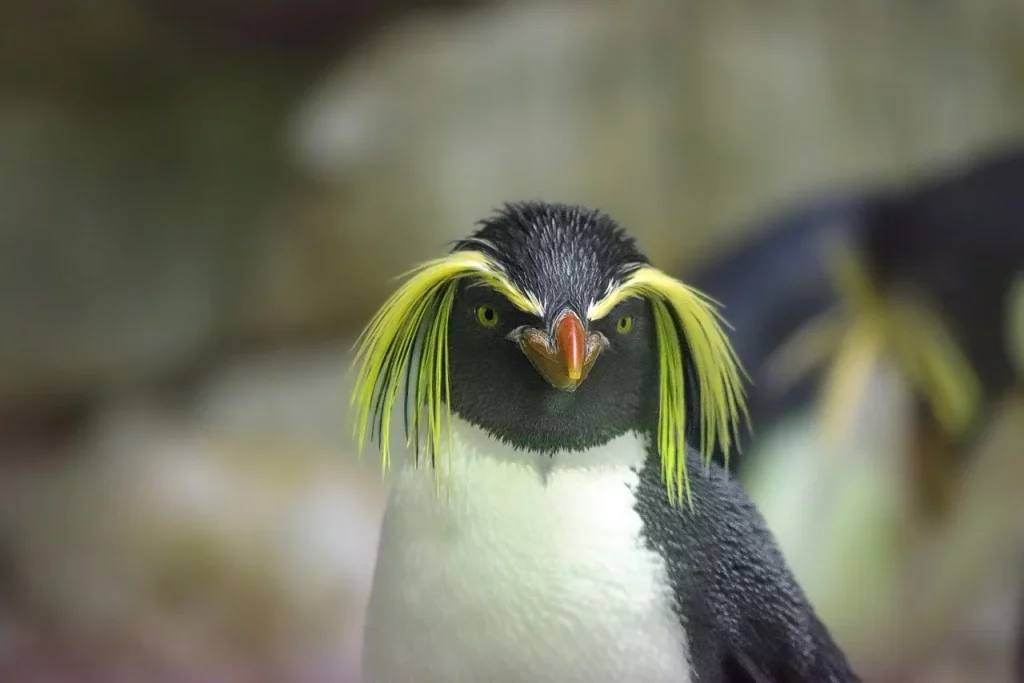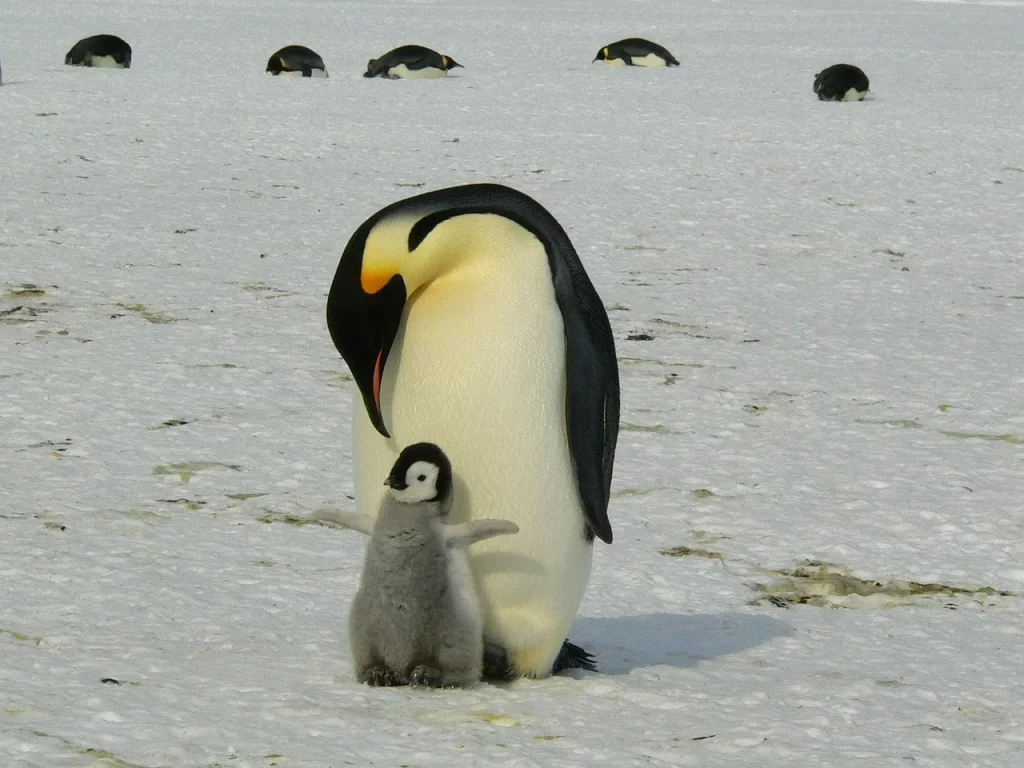Welcome to a journey into the world of these remarkable birds that have intrigued scientists and animal lovers alike. Did you know that penguins are some of the most adaptable and interesting creatures on our planet?
In this article, we will explore a variety of facts about penguins, ranging from their adaptability in the coldest climates on earth to their unique social habits. Prepare to be enchanted by these adorable yet resilient creatures as we uncover the mysteries and wonders of their world.
The penguin loves its own nature as much as it loves the icy world it inhabits.
Jacques Cousteau
Penguin Facts
Remember that knowledge is not just about reading but also about understanding and retaining it. I created a quiz at the end of this article to test your knowledge, so be sure to read all these facts carefully and prove your mastery of the topic. Let’s start, penguin master.
- Penguins, incapable of flight, are adapted for aquatic life with their swimming and diving abilities.
- Located predominantly in the Southern Hemisphere, penguins are primarily found south of the equator, except for the Galápagos penguin.
- The Emperor Penguin stands out as the largest in both height and weight among its species.
- Penguins have the unique ability to drink saltwater, thanks to a special gland that filters salt.
- Both parents in many penguin species share the responsibility of egg incubation and chick rearing.
- Their vision underwater is exceptional, enabling penguins to dive over 250 meters deep.
- The Gentoo penguin, the quickest among them, can swim at speeds up to 36 km/h (22 mph).
- Penguin feathers are compact, stiff, and overlapping, providing them with insulation and waterproofing.
- Their distinctive black and white coloring serves as an effective camouflage in the water.
- Their wings, resembling flippers, are perfect for swimming but not so much for walking on land.
- Penguins can minimize heat loss by controlling blood flow to their extremities in frigid environments.
- During mating and egg incubation periods, some species like the Emperor penguin can survive months without food.
- Antarctic penguins often form massive breeding colonies on ice or nearby islands.

- Communication in penguins involves a mix of vocal signals and physical gestures.
- The Little Blue Penguin, the smallest species, is about 40 cm tall and weighs around 1 kg.
- Mainly feeding on krill, fish, and squid, these are the staples in a penguin’s diet.
- Their molting process is rapid, with new feathers replacing the old ones in a swift manner.
- Interestingly, penguin guano plays a crucial role in some ecosystems as a nutrient source.
- Global warming poses significant threats to various penguin species.
- Exhibiting both heterosexual and homosexual patterns, penguins have diverse mating behaviors.
- The yellow-eyed penguin prefers solitude during its breeding phase, unlike most other species.
- “Tobogganing” is a movement technique used by penguins to swiftly move across ice.
- With a solid bone structure, unlike most birds, penguins are less buoyant and better swimmers.
- Emperor Penguins are capable of underwater breath-holding for up to 20 minutes.
- Penguin colonies are typically loud, as each penguin uses unique calls to recognize one another.
- The only penguin species that sometimes ventures into the Northern Hemisphere is the Galápagos Penguin.
- Social behaviors like mutual preening and huddling for warmth are common among penguins.
- Ocean temperature increases are impacting the penguins’ food availability and breeding areas.

- Their wings, which evolved into flippers, are more adapted for aquatic than aerial mobility.
- The main predators of penguins include leopard seals and orcas.
- When born, penguin chicks are covered in a soft down, which is later replaced by waterproof feathers.
- The Adélie Penguin got its name from the spouse of a French explorer who discovered this species.
- Penguins have existed for approximately 60 million years.
- Known for their striking orange features, the King Penguins are the second-largest penguin species.
- Differences in body size and weight are substantial across various penguin species.
- Environmental pollution, including oil spills, severely impacts penguin populations.
- To conserve energy while moving, penguins often slide on their bellies in a behavior called “tobogganing.”
- Penguins have better vision underwater compared to on land, which is crucial for their hunting.

- Some penguin species have a lifespan of up to 20 years in the wild.
- Preservation efforts for penguins include creating protected habitats and marine conservation zones.
- The Falkland Islands host one of the world’s largest penguin populations.
- Rockhopper Penguins are named for their unique way of hopping across rocky landscapes.
- “Pebble theft,” where penguins steal stones from other nests, is an intriguing aspect of their behavior.
- The Macaroni Penguin is distinguished by its unique yellow and black feather crests.
- A wide range of vocal sounds is part of the penguins’ communication system.
- The migratory habits of penguins vary significantly across different species.
- Among the most elusive and rare, the Fiordland Penguin is a lesser-known species.
- The conservation status of penguins ranges from being of least concern to endangered.
- Penguins have a streamlined body shape for efficient swimming.
- Human overfishing can cause food scarcity for penguins, affecting their survival.
Penguin Myths

With your newfound knowledge of all these interesting facts about penguins still fresh, we move on to separate the myth from the truth. Let’s cancel some popular myths about them.
- Penguins Can Fly
They are flightless birds. While they can’t soar in the sky, they are expert swimmers. Their wings have evolved into flippers, making them adept underwater “flyers,” gliding gracefully in the ocean. - All Penguins Live in Antarctica
Not all of them live in icy habitats. Species like the Galapagos Penguin thrive in warmer climates, right on the equator! Penguins have adapted to a range of environments, from chilly Antarctica to sunnier shores. - Penguins Are Monogamous for Life
While it’s true that many penguin species form strong pair bonds, these bonds often last for just one breeding season. Some species, like the Emperor Penguin, may find a new partner each year. It’s more about practicality than lifelong romance! - Penguins Only Eat Fish
They have a varied diet. Fish is a staple, but they also feast on krill, squid, and other small sea creatures. Their diet can vary widely depending on their habitat and what’s available in their local ecosystem. - Penguins Can’t Taste Their Food
They have a limited sense of taste, but they can taste their food. They’re believed to have fewer taste buds than humans and are mainly sensitive to salty and sour flavors, which makes sense given their seafood diet!
Penguin Quotes

Below, you will find some of my favorite quotes about these beautiful creatures. I will be happy to hear yours in the comments so I can add them to the list.
Penguins are a reminder of the simplicity and awkwardness of life, yet they exhibit grace under pressure.
David Attenborough
David Attenborough, a renowned naturalist, highlights the penguin’s unique ability to navigate life with simplicity and elegance, despite its apparent awkwardness.
In the world of penguins, every day is a unique story of survival and wonder.
Jane Goodall
Jane Goodall, an eminent primatologist and anthropologist, captures the daily struggle and beauty in the life of penguins.
Penguins represent the enigma of survival against all odds, a testament to life in the extremes.
Sylvia Earle
Sylvia Earle, a famous marine biologist, reflects on penguins as symbols of resilience and survival in extremely challenging conditions.
Penguins are the comedians of the bird world, bringing joy with their playful antics.
Steve Irwin
Steve Irwin, the enthusiastic wildlife expert, appreciates penguins for their amusing behavior, seeing them as the entertainers in the avian community.
Observing penguins teaches us about the delicate balance of life and our responsibility to preserve it.
Richard Attenborough
Richard Attenborough, a celebrated filmmaker and environmentalist, views penguins as a lesson in the fragility of life and the importance of conservation efforts.
Penguin FAQ

I hope you enjoyed all these delightful quotes about penguins. Now let’s focus on the FAQ section. Read carefully these common questions about them because they are the last piece of information before the quiz. Don’t disappoint me.
- How do penguins stay warm?
They have a few cool tricks up their sleeves (or, should I say, flippers?) to stay warm. Firstly, they’re equipped with a thick layer of blubber, which acts like a cozy, natural sweater. On top of that, their feathers are tightly packed and waterproof, creating a barrier against the cold. And let’s not forget that penguins are pros at huddling together to share body heat. - Can penguins breathe underwater?
While penguins are amazing swimmers, they can’t breathe underwater. They’re just like us in this regard – needing air to breathe. Penguins hold their breath when they dive, and some species can stay underwater for up to 20 minutes. - Are penguins endangered?
The penguin world is quite diverse, with some species doing okay and others facing serious challenges. Factors like climate change, overfishing, and habitat destruction are major threats. Species like the Galápagos penguin and the African penguin are considered endangered. - How do penguins mate?
Penguins have quite the romantic streak. Many species are monogamous, sticking with one partner for a season or even a lifetime. Courtship can be quite sweet – they often perform mutual preening or sing duets. And when it comes to nesting, both parents usually get involved in the egg incubation and chick-rearing duties. Talk about teamwork! - Are penguins friendly?
Penguins are generally not afraid of humans, but ‘friendly’ might be stretching it. They’re curious creatures, especially in areas where they don’t often encounter people. However, like any wild animal, it’s best to admire them from a distance and not try to interact closely with them. They have their own penguin things to do, after all!
Penguin Trivia

Get ready to dive into the icy world of penguins with this quiz! But beware; fail to answer correctly, and you might just wake up as the honorary guest at a penguin party in Antarctica!
Penguin Merch
If you are a true penguin fan, then you definitely need to check out our merchandise. You can find T-shirts, hoodies, mugs, and tote bags for your favorite designs. Feel free to check out all the other designs in our shop.
Conclusion
Our exploration of the world of penguins has come to an end. It’s evident that these birds are not just another species in the animal kingdom but a symbol of endurance, family bonds, and adaptability.
Their journey through icy waters and snowy lands mirrors our own journey through life’s challenges. They remind us of the importance of community and resilience.
Now, just for fun: if penguins could form a musical band, what genre of music do you think they’d be most suited for? Let me know your funny ideas in the comments.
2 Sources Used For This Article

